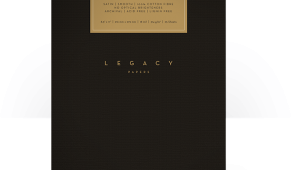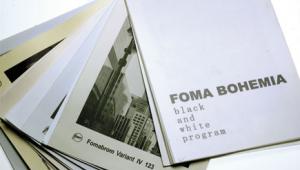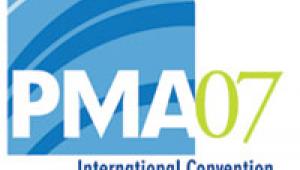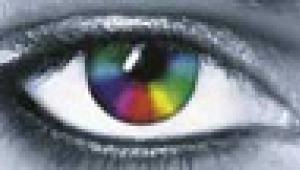Inkjet Paper Options; A Sampler Of Media For Pigment-Ink Printers
It seems that every week brings at least one new paper announcement that promises to change the way we do our printing. Where a few years ago it was common to use only the paper and ink sold by the printer manufacturer, today many photographers are using third-party papers for the wider variety of surfaces and weights available.
 |
Although media choices are still more limited for dye-based inkjet printers, many of the papers out today can be used with either dye or pigment-ink printers. Most photographers are using pigment inks these days, thanks in part to the wider variety of papers and the improved archival life of pigment-based prints, and for this roundup I've printed all test prints on an Epson Stylus Pro 3800, which is a 17" printer that uses Epson's UltraChrome K3 pigment inks. The choice of printer was made for two simple reasons. First, while Canon and HP both have excellent pigment printers available today, the majority of users are still using Epson printers. Second, and most importantly for this report, the Epson is the only printer with downloadable profiles for all of the papers tested here. This shouldn't imply that the Epson is the best printer, and I'm not making a claim one way or another, but it does indicate that if you depend on profiles generated by the paper companies, the Epson line-up seems to give you the best support.
In this report, I'll take a look at some of the options available now. I've broken this down by company, and you'll find a table with each of the paper types listed, along with information on how the paper performed, and the average cost per sheet. Keep in mind that costs vary from one source to another, and the size and quantity you purchase will impact price greatly.
Paper Types
There are a few major categories of paper types, with the most common being photo papers, such as gloss and luster, which are similar in look and feel to traditional photo paper. The second category is fine art papers. Typically matte finish paper, many of these are 100 percent cotton papers ranging from very smooth to highly textured surfaces. Once you enter the realm of fine art media the options are seemingly endless, and occasionally priced beyond mere mortal photographers.
 |
|
|
The third category, and the newest one in the inkjet area, is fiber-based papers. While the gloss and luster photo papers resemble RC (Resin Coated) papers similar to what you get with a standard photo, fiber papers run the gamut of gloss to matte finish with a variety of surface types. Fiber papers excel at black and white printing, producing deeper blacks than traditional fine art papers. This is because you are still able to print with the photo black ink. Nearly all fine art papers use the matte black ink found in pigment printers, which doesn't produce as dark or dense of a black, but does help prevent loss of detail in shadow areas. With fine art paper, there is more dot gain, or ink spread, because the paper doesn't have the same type of coating an RC paper uses. So, for many fans of black and white, the introduction of fiber papers has been a welcome one and has led to a resurgence of popularity for black and white printing.
 |
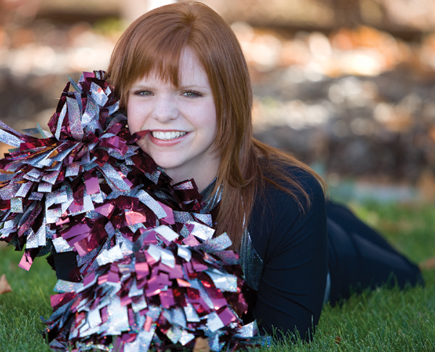 |
For the test prints, I selected a portrait, a black and white image with high contrast, and a color image. Along with each of these images, I printed the excellent test chart from Scott Martin (www.on-sight.com) to check for color accuracy, D-max, and profile quality. Also, even though the Epson printer includes an Advanced Black and White mode, I did my prints using the Color mode to retain control over the profiles being used.
Inkpress Paper
Inkpress Paper has a complete line of papers for every printing need, including RC-type gloss and luster papers, fine art papers, and films. Inkpress has high-quality papers and manages to sell them for less than other name brands, making them a good choice for anyone on a budget or just interested in trying some new surfaces. They have profiles available for various Epson and Canon printers, and I was pleased with the quality of the profiles used for these tests.
 |
I tested the Luster paper and found that it was very similar to the Epson Premium Luster in texture and weight. The Inkpress version is slightly whiter than the Epson paper and has a very impressive 2.16 D-max. This paper worked very well for both the portrait and color images, although I found a bit more bronzing on the black and white print than some of the other papers.
For a gloss paper, I printed to the White Gloss Film. This paper has a very bright white surface, and as the name implies, is a very smooth surface. With a D-max of 2.15, the paper holds excellent shadow detail and very good saturation for color. It's a nice paper for black and white printing as well as color.
Their Rag paper is available in two weights--200gsm and 300gsm, and in both warm and cool tones. The Warm Tone appears to be a standard rag with no optical brighteners, while the Cool Tone is a whiter finish. Both papers are dual-sided, making them a good choice for proofing, books, and portfolios. The papers have more texture than the Epson UltraSmooth Fine Art and are very similar to Hahnemühle's Photo Rag. The Rag paper lent itself well to all three prints used for these tests.
Finally, I tested their fiber paper, Fiber Gloss. At 250gsm, it's a little thinner than some of the other fiber-based papers, which helps with feeding through the printer. What makes the Fiber Gloss unique among the fiber papers I looked at is the finish of the paper. It more closely resembles a traditional gloss paper than other fiber-based papers, with a very smooth surface. D-max is good at 1.96, and the paper works very well for black and white prints.
